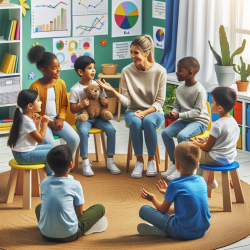Key Findings from the Research
- Predictive Power of Picture Naming: The study found that picture naming was the only variable that significantly predicted performance in oral narrative tasks. Adolescents who performed better in naming tasks also excelled in retelling narratives.
- Low Percentage of Deviant Communicative Behavior: Adolescents exhibited a low percentage of deviant communicative behaviors, such as failing to respect the timeline of events or adding incorrect information.
- No Significant Effect of Age, School Year, or Memory: The study did not find any significant associations between oral narrative performance and factors such as age, school year, or memory, suggesting that these variables may not be as influential as previously thought.
Practical Applications for Practitioners
Based on these findings, here are some data-driven strategies that practitioners can implement to improve the oral narrative skills of adolescents:
- Focus on Picture Naming Exercises: Incorporate picture naming tasks into your therapy sessions. Given the strong correlation between picture naming and narrative retelling, improving this skill can have a cascading effect on overall narrative abilities.
- Monitor and Address Deviant Communicative Behaviors: While the study found a low incidence of such behaviors, it's crucial to identify and address them early. Techniques such as guided retelling and structured narrative exercises can help mitigate these issues.
- Use Standardized Tests Like the MAC Battery: The study validated the use of the Montreal Communication Assessment Battery (MAC Battery) for adolescents without requiring any adaptation. This can be a reliable tool for assessing and tracking progress in narrative skills.
Encouraging Further Research
While the study provides valuable insights, it also highlights areas that warrant further investigation. For instance, exploring the impact of socioeconomic status on narrative skills or comparing performance across different educational settings could offer a more comprehensive understanding. Practitioners are encouraged to engage in or support research that addresses these gaps.
To read the original research paper, please follow this link: Performance of adolescents in oral narrative discourse and associated factors.










